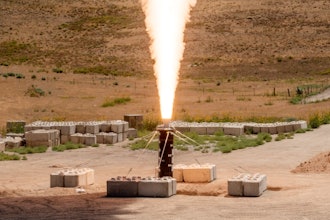
OAK RIDGE, Tenn., Sept. 26, 2016 — Samsung Electronics has exclusively licensed optically clear superhydrophobic film technology from the Department of Energy’s Oak Ridge National Laboratory (ORNL) to improve the performance of glass displays on smartphones, tablets and other electronic devices.
ORNL’s development of a transparent coating that repels water that carries away dust and dirt, reduces light reflection and resists fingerprints and smudges resulted from approximately three years of superhydrophobic research on glass-based coatings.
“The thin nanostructured layer of porous glass film enables these combined properties, making it suitable for commercial applications,” said ORNL’s Tolga Aytug, co-inventor of the technology.
To be superhydrophobic, a surface must achieve a water droplet contact angle exceeding 150 degrees. ORNL’s coating has a contact angle of between 155 and 165 degrees, so water literally bounces off, taking away dust particles.
The ORNL research team developed the superhydrophobic technology by depositing a thin glass film on a glass surface and heating the coated glass to transform the surface into two material compositions. A selective etching process produces a porous three-dimensional network of high-silica content glass that resembles microscopic coral and enables water-repellent and antireflective properties.
Beyond electronics, the technology holds significant potential for applications in solar panels, lenses, detectors, windows and many other products. The fields of solar panels and architectural windows are still available for licensing.
Aytug led the technology’s development in collaboration with ORNL co-inventors Parans Paranthaman, Daniela Bogorin, David Christen, Brian D’Urso and John Simpson and was recognized with an R&D 100 Award in 2015. The work was supported by ORNL’s Laboratory Directed Research and Development Program and Technology Innovation Program.
UT-Battelle manages ORNL for DOE’s Office of Science. The Office of Science is the single largest supporter of basic research in the physical sciences in the United States, and is working to address some of the most pressing challenges of our time.






















